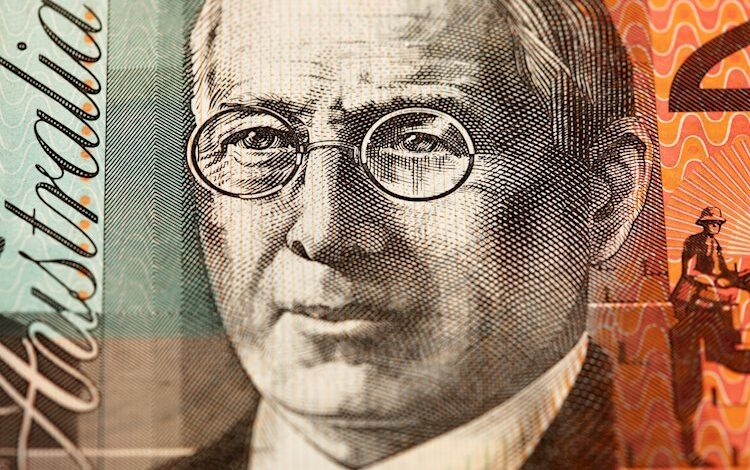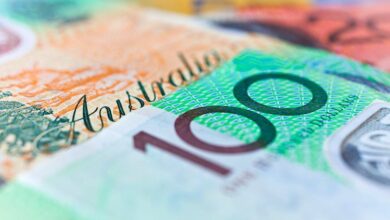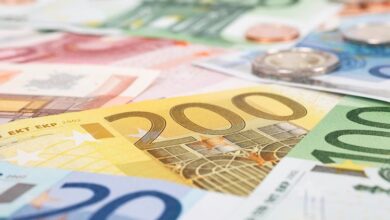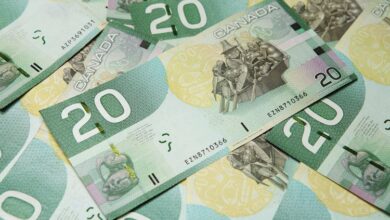Australian Dollar declines as China increases patrols near Taiwan’s Kinmen islands

- Australian Dollar loses ground on lower S&P/ASX 200 on Monday.
- Australian currency is expected to remain subdued ahead of the Monthly Consumer Price Index and Retail Sales.
- China’s Fujian Coast Guard increases patrols in waters near Taiwan’s Kinmen islands.
- US Dollar could face a struggle as US Treasury yields continue to lose ground.
- Fed is expected to prolong elevated interest rates after robust economic data from the United States.
The Australian Dollar (AUD) halts its winning streak initiated on February 14. This decline is influenced by Monday’s downward movement of the S&P/ASX 200, possibly due to tension arising between China and Taiwan. However, the Australian money market opened higher mirroring the optimism that propelled Wall Street to a record high on Friday. These market movements coincide with Nvidia’s exceptional earnings, which spurred a surge driven by robust demand for artificial intelligence-related products.
Australian Dollar is anticipated to remain subdued as investors await key economic releases, including the Australian Monthly Consumer Price Index on Wednesday and Retail Sales data on Thursday, for potential market-moving catalysts. However, recent data suggesting a resurgence in private sector activity in February, particularly driven by robust growth in the services sector, has provided some upward support for the AUD.
The US Dollar Index (DXY) maintains stability following recent gains over the past two sessions. Support for the US Dollar (USD) stemmed from robust employment and mixed Purchasing Managers Index (PMI) data from the United States (US), strengthening the argument for the Federal Reserve (Fed) to prolong elevated interest rates in order to tackle inflationary pressures. Market participants are anticipated to closely monitor key economic indicators such as Gross Domestic Product Annualized (Q4), Core Personal Consumption Expenditures, and ISM Manufacturing PMI later in the week, alongside the release of the Fed Monetary Policy Report.
Daily Digest Market Movers: Australian Dollar depreciates on lower money market
- Judo Bank Australia Composite PMI increased to 51.8 in February from the previous reading of 49, indicating the first month of expansion in the Australian private sector after a five-month period of contraction.
- Judo Bank Australia Services PMI rose to 52.8 from the previous reading of 49.1. Manufacturing PMI fell to 47.7 from 50.1 prior due to a significant drop in new orders.
- Economists at TD Securities have adjusted their forecasts for the Reserve Bank of Australia’s (RBA) cash rate decisions. While they still anticipate a total of 100 basis points (bps) in rate cuts throughout the easing cycle, they now expect the first 25 bps cut to occur in November, compared to their previous projection of August.
- RBA’s Meeting Minutes revealed that the Board deliberated on the possibility of raising rates by 25 basis points (bps) or keeping rates unchanged. While recent data indicated that inflation would return to target within a reasonable timeframe, it was acknowledged that this process would “take some time.” Consequently, the board agreed that it was prudent not to rule out another rate hike.
- China’s Commerce Ministry stated on Monday, “The US’s assertion that China has generated ‘overcapacity’ is inaccurate, highlighting the unilateral and hegemonic actions of the US.”
- Chinese authorities announced that the Fujian Coast Guard is increasing patrols in waters adjacent to Taiwan’s Kinmen islands to effectively uphold operational order in the relevant maritime areas, and ensure the safety of fishermen’s lives and property.”
- Economists at Commerzbank have adjusted their forecast, now expecting the first interest rate cut at the Federal Open Market Committee (FOMC) meeting in June instead of May. This adjustment is attributed to the reduced likelihood of a recession. Consequently, they anticipate a less aggressive easing of monetary policy compared to their previous projections. Instead of eight rate cuts, they now anticipate five, with three expected in 2024 and two in 2025.
- President of the New York Fed, John C. Williams, discussed his perspective on the Fed’s interest rate stance during an interview with Axios. He suggested that rate cuts could be on the horizon later this year, but emphasized that they would only occur if deemed appropriate. Williams noted that his outlook on the economy remains largely unchanged following the release of January’s economic data.
- Federal Reserve Governor Christopher J. Waller recently suggested that the Federal Reserve should postpone any rate cuts for at least a few more months to assess whether January’s high inflation report was an anomaly.
- S&P Global US Services PMI posted the reading of 51.3 in February, against the expected 52.0 and 52.5 prior.
- S&P Global US Manufacturing PMI improved to 51.5, exceeding the expected 50.5 and 50.7 prior.
- S&P Global US Composite PMI declined to 51.4 in February from the previous reading of 52.0.
- US Initial Jobless Claims declined to 201K for the week ending on February 16, against the market expectation of 218K and the previous figure of 213K.
Technical Analysis: Australian Dollar hovers around the major level of 0.6550
The Australian Dollar trades near the key level of 0.6550 on Monday. An immediate resistance zone is anticipated around the previous week’s high at 0.6595, aligned with the psychological barrier at 0.6600. Additionally, further resistance is expected at the 38.2% Fibonacci retracement level of 0.6606, coinciding with February’s high of 0.6610. A breach above this level could propel the AUD/USD pair towards a significant level of 0.6650. Conversely, if the pair experiences downward pressure, a break below the major level of 0.6550 might lead the AUD/USD pair to a retest of the nine-day Exponential Moving Average (EMA) at 0.6544, followed by psychological support at 0.6500.
AUD/USD: Daily Chart
Australian Dollar price today
The table below shows the percentage change of Australian Dollar (AUD) against listed major currencies today. Australian Dollar was the weakest against the US Dollar.
| USD | EUR | GBP | CAD | AUD | JPY | NZD | CHF | |
| USD | 0.03% | 0.11% | 0.06% | 0.14% | -0.01% | 0.29% | 0.06% | |
| EUR | -0.03% | 0.08% | 0.03% | 0.11% | -0.02% | 0.27% | 0.03% | |
| GBP | -0.11% | -0.08% | -0.05% | 0.03% | -0.11% | 0.18% | -0.05% | |
| CAD | -0.06% | -0.03% | 0.05% | 0.09% | -0.07% | 0.23% | 0.00% | |
| AUD | -0.14% | -0.10% | -0.01% | -0.07% | -0.13% | 0.16% | -0.07% | |
| JPY | 0.01% | 0.03% | 0.16% | 0.06% | 0.15% | 0.30% | 0.06% | |
| NZD | -0.30% | -0.26% | -0.18% | -0.23% | -0.15% | -0.29% | -0.24% | |
| CHF | -0.05% | -0.03% | 0.05% | 0.01% | 0.10% | -0.07% | 0.24% |
The heat map shows percentage changes of major currencies against each other. The base currency is picked from the left column, while the quote currency is picked from the top row. For example, if you pick the Euro from the left column and move along the horizontal line to the Japanese Yen, the percentage change displayed in the box will represent EUR (base)/JPY (quote).
RBA FAQs
The Reserve Bank of Australia (RBA) sets interest rates and manages monetary policy for Australia. Decisions are made by a board of governors at 11 meetings a year and ad hoc emergency meetings as required. The RBA’s primary mandate is to maintain price stability, which means an inflation rate of 2-3%, but also “..to contribute to the stability of the currency, full employment, and the economic prosperity and welfare of the Australian people.” Its main tool for achieving this is by raising or lowering interest rates. Relatively high interest rates will strengthen the Australian Dollar (AUD) and vice versa. Other RBA tools include quantitative easing and tightening.
While inflation had always traditionally been thought of as a negative factor for currencies since it lowers the value of money in general, the opposite has actually been the case in modern times with the relaxation of cross-border capital controls. Moderately higher inflation now tends to lead central banks to put up their interest rates, which in turn has the effect of attracting more capital inflows from global investors seeking a lucrative place to keep their money. This increases demand for the local currency, which in the case of Australia is the Aussie Dollar.
Macroeconomic data gauges the health of an economy and can have an impact on the value of its currency. Investors prefer to invest their capital in economies that are safe and growing rather than precarious and shrinking. Greater capital inflows increase the aggregate demand and value of the domestic currency. Classic indicators, such as GDP, Manufacturing and Services PMIs, employment, and consumer sentiment surveys can influence AUD. A strong economy may encourage the Reserve Bank of Australia to put up interest rates, also supporting AUD.
Quantitative Easing (QE) is a tool used in extreme situations when lowering interest rates is not enough to restore the flow of credit in the economy. QE is the process by which the Reserve Bank of Australia (RBA) prints Australian Dollars (AUD) for the purpose of buying assets – usually government or corporate bonds – from financial institutions, thereby providing them with much-needed liquidity. QE usually results in a weaker AUD.
Quantitative tightening (QT) is the reverse of QE. It is undertaken after QE when an economic recovery is underway and inflation starts rising. Whilst in QE the Reserve Bank of Australia (RBA) purchases government and corporate bonds from financial institutions to provide them with liquidity, in QT the RBA stops buying more assets, and stops reinvesting the principal maturing on the bonds it already holds. It would be positive (or bullish) for the Australian Dollar.
Get Best News and Web Services here







